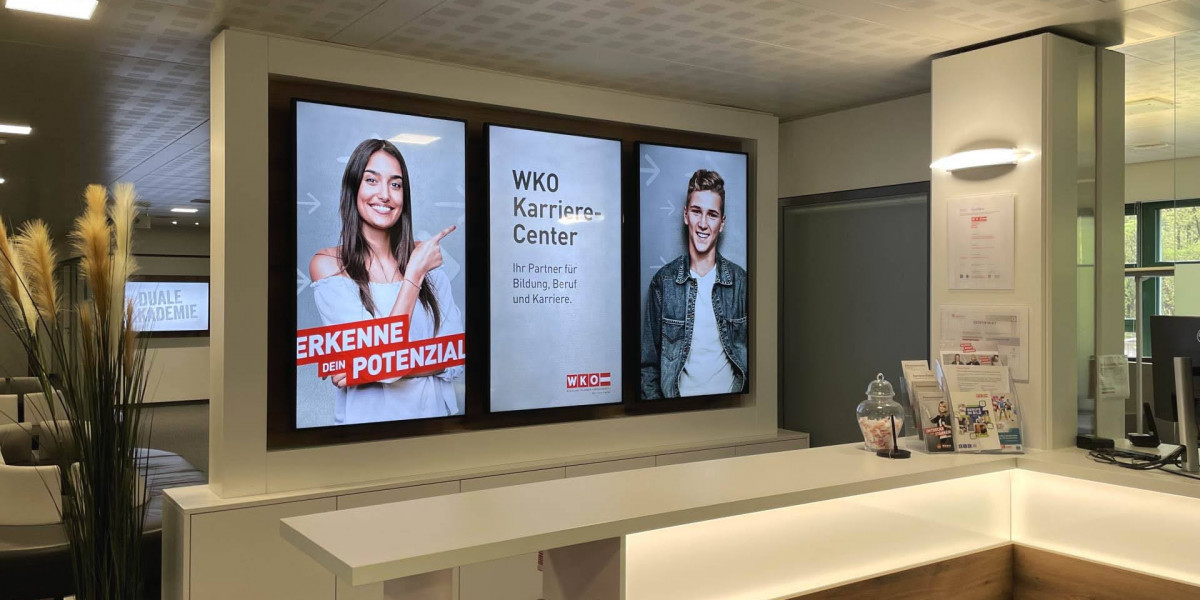With everyone more connected today, strong communication is needed among people, companies and organizations. Digital signage is one of the top tools that make communicating so easy. Because of smart digital signage, traditional static boards are now replaced by platforms that are interactive, intelligent and useful for measuring outcomes.
What Does Digital Signage Mean?
Digital signage means using digital displays such as LCD, LED or projectors, to show images, video, text or live feeds. You will often find them in retail stores, airports, restaurants, hospitals and corporate offices. Content updates on traditional digital signage are controlled by a content management system (CMS) which allows managers to plan and change the content on multiple screens.
But as technology has improved, digital signage has also developed. Smart digital signage now goes a step beyond, mixing real-time data, interactivity, AI and the IoT to provide a better way to communicate.
Smart Digital Signage Solutions Are on the Rise
Besides broadcasting information, smart digital signage uses modern technology to suit its location and viewers. Intelligent systems can collect, review and analyze data, talk with users and update content when certain rules are met. Let’s look at the features that make smart solutions different from traditional digital signage:
1. Data Integration: Smart signage is able to access and display recent information from weather APIs, traffic data, social media and sales data. As a result, the content is relevant to the specific situation. An example is that a digital menu board can adjust its recommendations depending on the time or the weather outside.
2. Audience Analytics: Sensors and artificial intelligence allow smart signage to figure out the age, gender and mood of the viewers which helps tailor the content to them. They also help companies learn about how customers interact and engage with the business.
3. Interactive Capabilities: Touchscreens, motion sensors and QR code scanning can change passive displays into interactive activities. Smart mirrors allow customers in retail to see clothes on themselves and find discounts without leaving the store.
4. Remote Management and Automation: With cloud-based CMS, businesses are able to control their content from a distance and from various locations. Without manual intervention, content is changed automatically when smart triggers are set.
5. IoT and AI Integration: Smart signage can be partnered with HVAC, lights and inventory systems, allowing the environment to become more responsive and intelligent.
Applications Across Industries
Smart digital signage solutions are making a significant impact across a wide range of sectors:
• Retail: In retail, businesses use smart signage to offer suggestions, show promotions and create interactive catalogs. They use information on foot traffic and customer age groups to make their ads more effective and raise the number of conversions.
• Corporate: Inside offices, smart signage helps with internal updates, displays dashboards, schedules staff meetings and combines with calendars to show room availability.
• Healthcare: Using smart signage, hospitals help people find their way, sign in patients and give alerts in emergencies, making things easier for everyone.
• Education: Universities and schools use digital signage to broadcast news, event details and warnings, while interactive displays are used to help students learn and stay involved.
• Transportation: At airports, train stations and bus terminals, smart signs are used for current schedules, directions and emergency warnings, making transit safe and easy for everyone.
• Hospitality: Hotels use digital signs to guide guests during check-in, share local attractions, show event schedules and greet each person personally.
Benefits of Smart Digital Signage
The move to smart solutions brings a host of advantages:
• Enhanced Engagement: Dynamic and customized content attracts users’ attention and leads them to engage more.
• Improved Efficiency: Automation and remote management allow updates to be made without manual effort.
• Real-Time Communication: Businesses can keep up with changes and send messages promptly.
• Data-Driven Decisions: Insights from Analytics and Reporting Help Make Better Choices for Improving Business.
• Saving Money: Despite the initial outlay, in the long run you can save on printing, labor time and marketing results.
The Next Phase in Digital Signage
With 5G, AI and edge computing becoming more common, smart digital signage will be able to do even more. Think of displays that understand things like the weather, what people are feeling and how crowded it is and then update themselves quickly with appropriate information. Using augmented reality (AR) and virtual reality (VR) together could make the difference between our physical world and online world even harder to see, offering people more immersive experiences in public places.
Businesses need to see digital signage as more than a display and use it as a key communication platform. The move to smart digital signage means companies can now use data to create interactive and engaging stories. It’s important to display information that matters to those who need it, when they need it.
In short, it is no longer optional to use digital signage solutions; it is now required because people want personal and instant experiences. Whatever your company does, smart signage helps you engage with your customers more effectively than ever.










